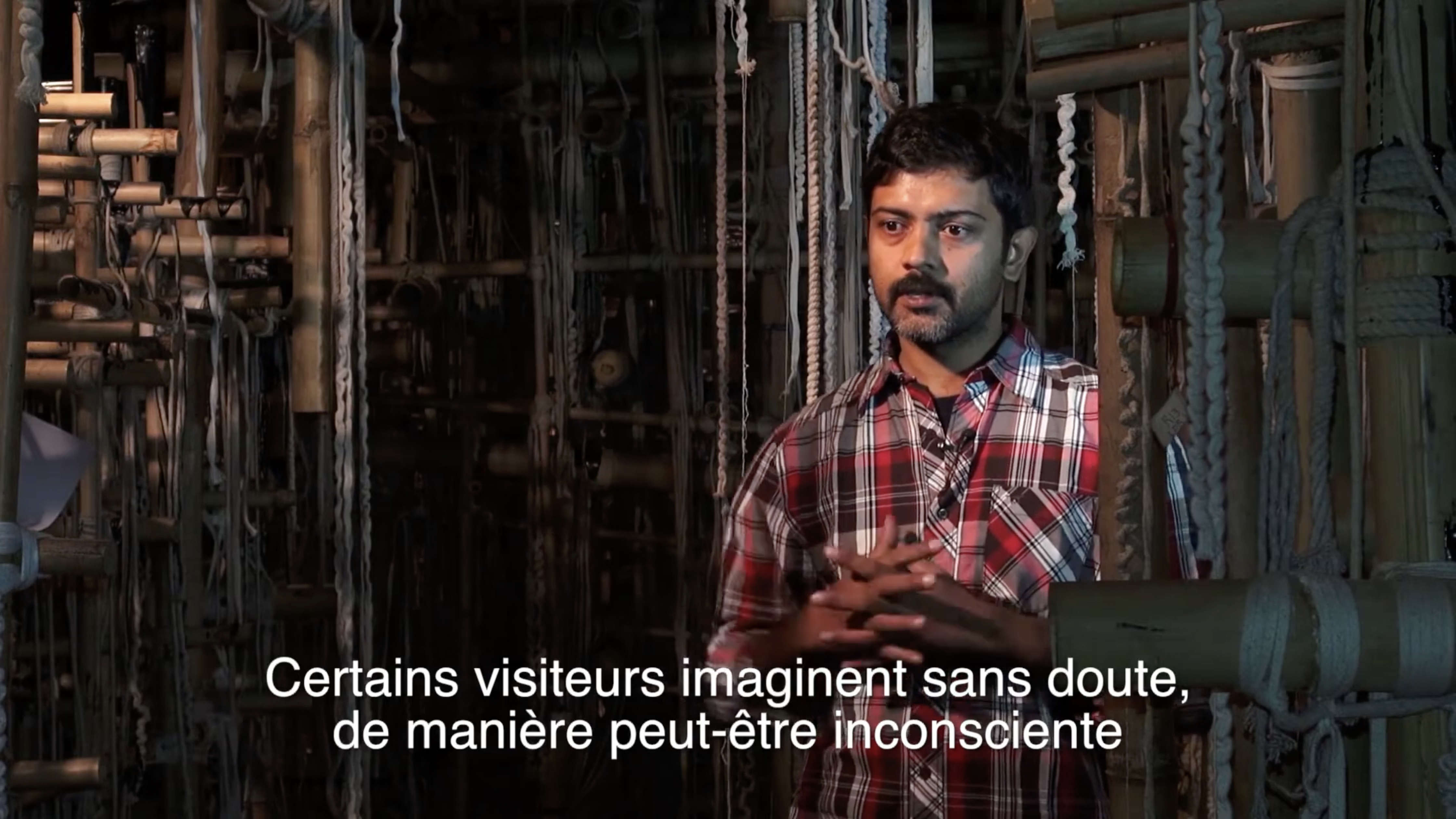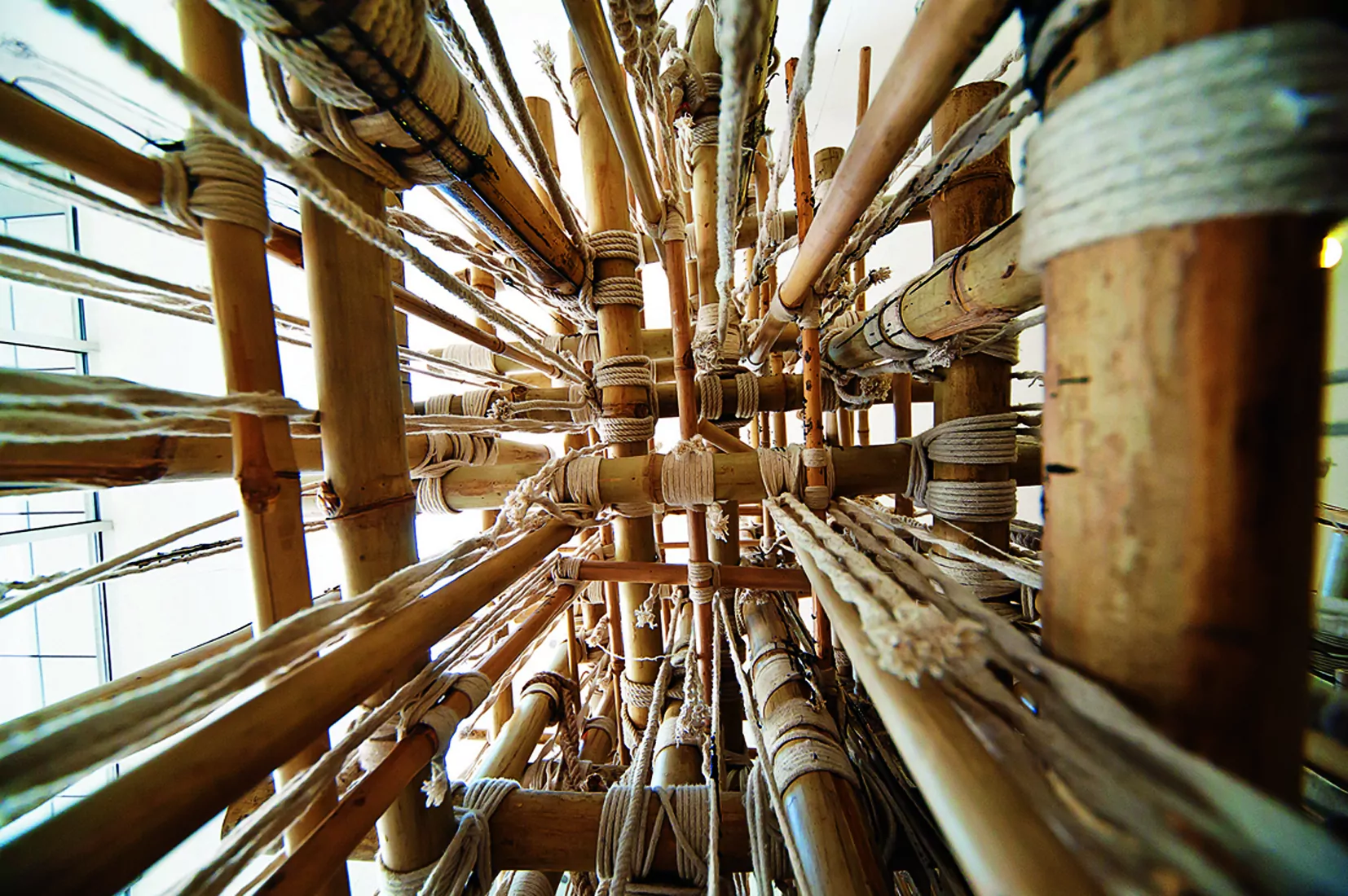
Asim Waqif
Epreuves
A year after the big impact young Indian artist Asim Waqif made at the Palais de Tokyo with his Bordel Monstre installation, he is exhibiting his work at a French gallery for the first time with a spectacular interactive site-specific installation.
Venu is an enormous bamboo structure fitted with sensors that respond to touch, sound, light and vibration. Visitors are invited both to experiment with the work and to act as the agent that sets it in motion. A trained architect, Asim Waqif finds his inspiration in our built environment. He is particularly interested in the search for new materials, urban development policies and the issue of waste. He uses a variety of media, from videos and installations to photography and sculpture.
The artist uses the Venu piece to highlight the concepts of durability and the complementarity between vernacular architectural traditions and new technologies. His goal is to create a structure that has meaning from both an ecological and a cultural point of view. He is, once again, commenting on contemporary consumerism. He believes that “decay and destruction have an important role to play in adapting to the dynamism of society.”
Halfway between photography and sculpture, Exploration pays homage to the Mausolée project, the unauthorised artists’ residence organised in 2010 in an abandoned supermarket at Porte de la Villette in the north of Paris by French graffiti artists Lek and Sowat. It became the headquarters for underground culture for a year. A piece in coloured graffiti forms a streak in the romantic black and white view of the Mausolée’s now legendary 40,000 m2 space, giving it a new dimension. It creates a space where freedom reigns, a residual entity where the filter of private and public memory can be applied.
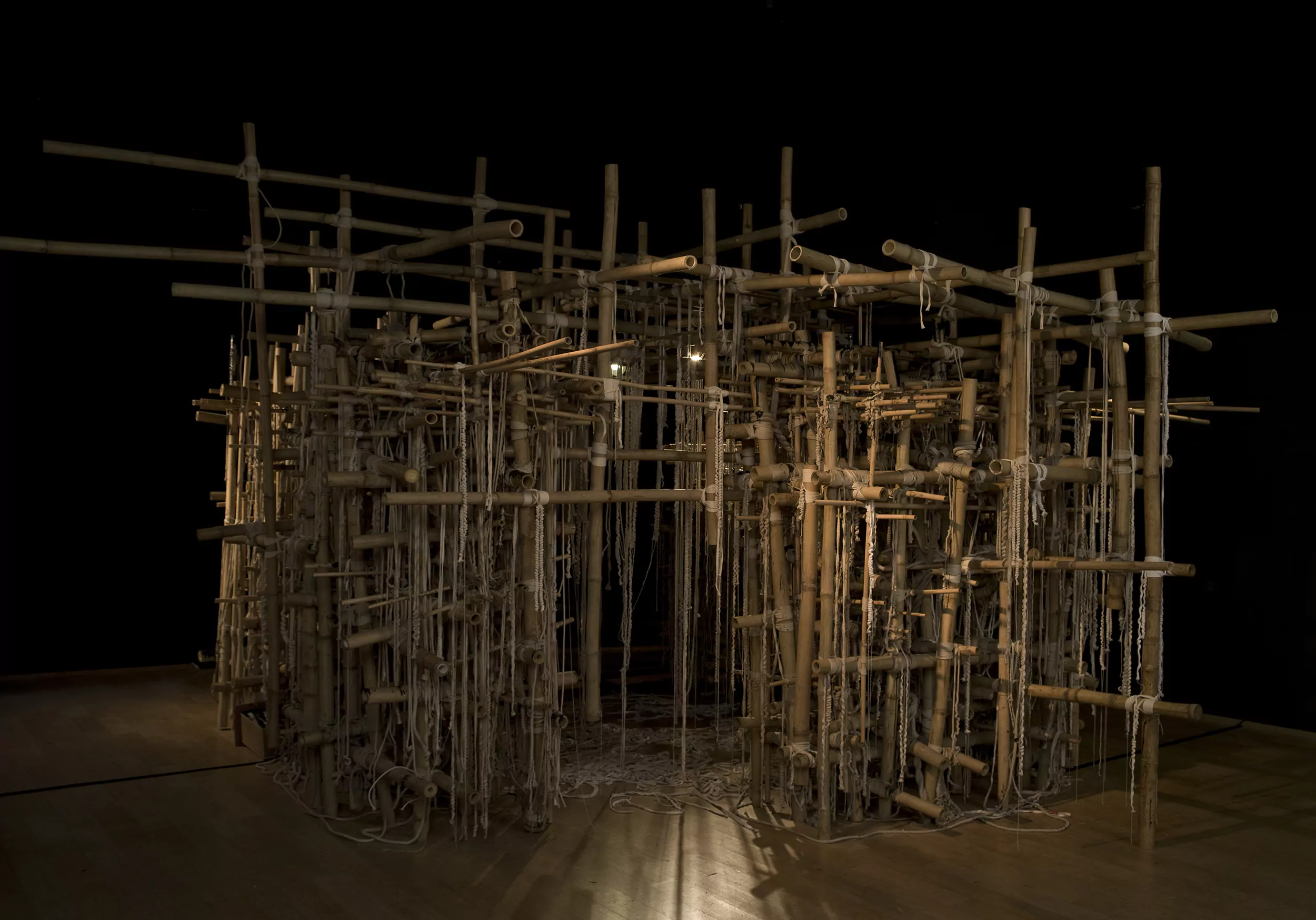
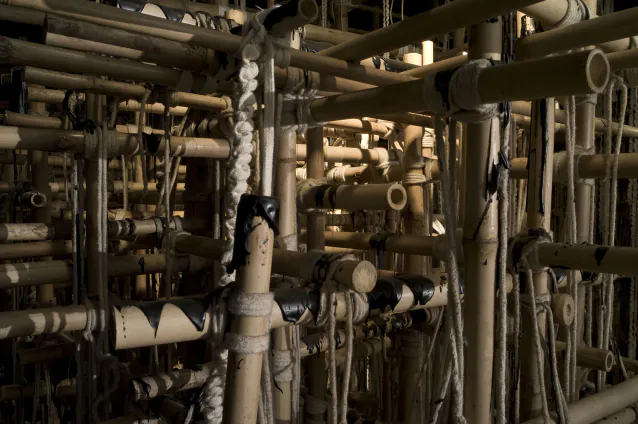
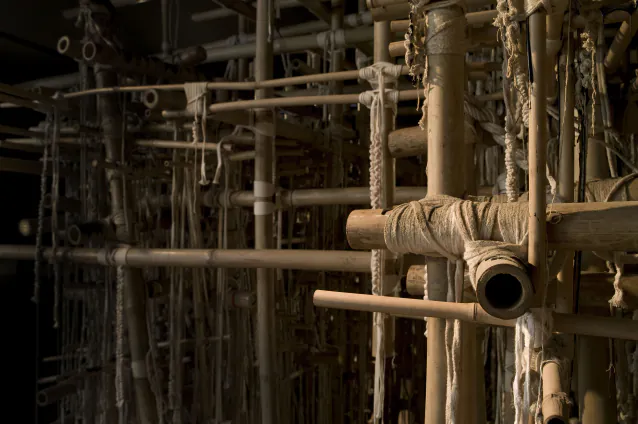
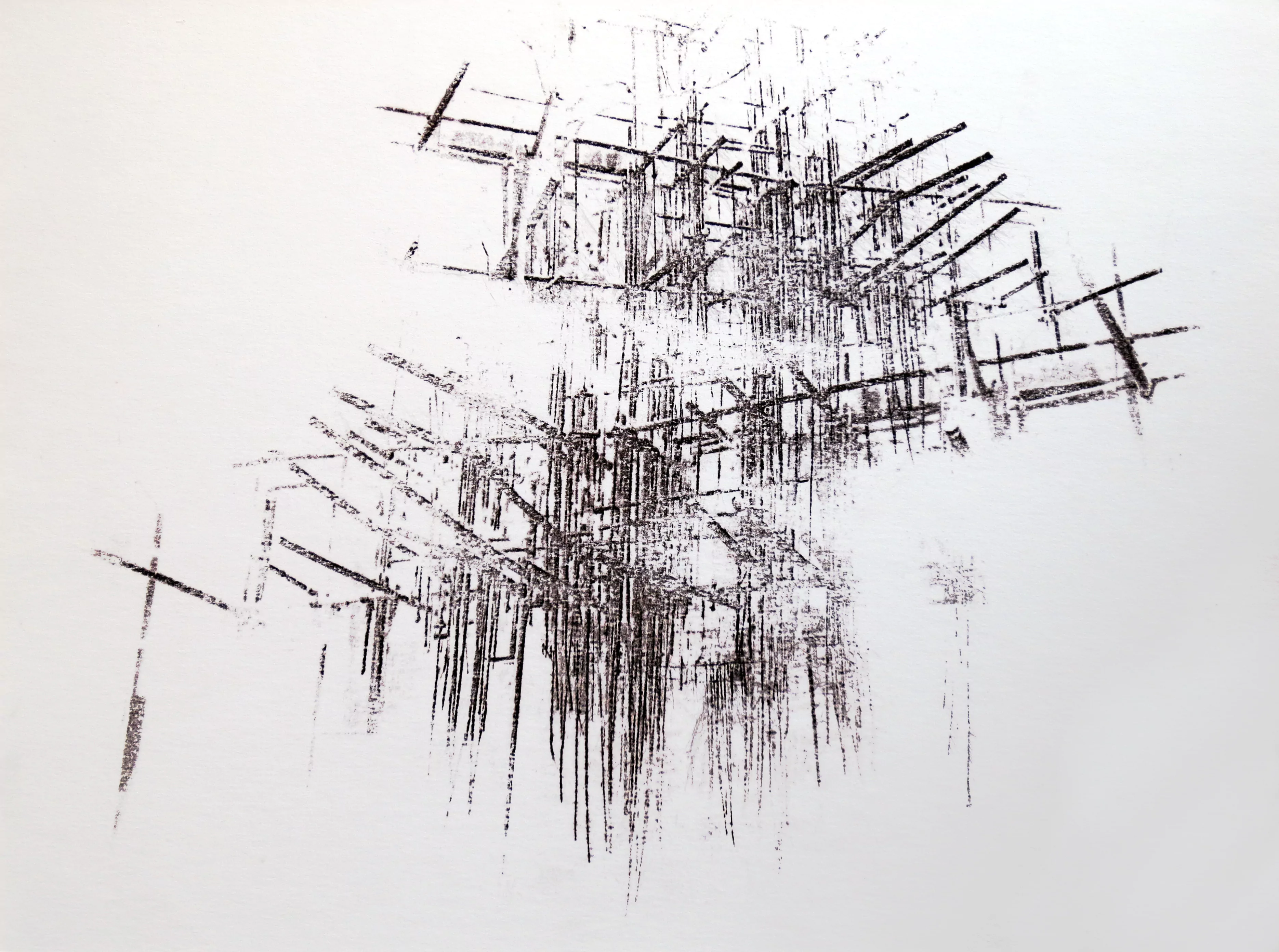
The artist
Born in 1978 in Hyderabad, India, Asim Waqif lives and works in New Delhi. He began his career as a director before moving to a purely artistic practice that employs a range of media, including video, installation, photography and sculpture. His main concern is with how materials are used, urban development policies, the idea of waste as well as issues of ecology and anthropology and his work is directly inspired by our built environment.
